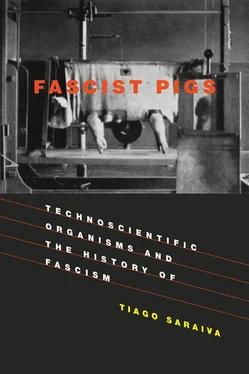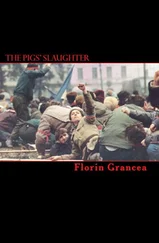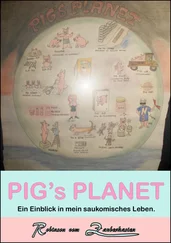Technical brigades consisting of 124 agricultural scientists and engineers were sent into the Portuguese fields to spread ten commandments of wheat farming. By following the first three, a farmer would defend the fatherland by using proper fertilization, mechanized implements, and selected seeds. The fourth and fifth commandments urged a farmer to use sowing machines and to rationally organize his livestock so as to have enough manure at his disposal. Succeeding commandments reminded a farmer of the important role of the technical brigades. The ninth called for a farmer to “reflect on the patriotic accomplishment in Italy,” and the tenth repeated the motto “Our land’s wheat is the border that best defends us.” [39]
In the years 1927–1933, the wheat fields of the Alentejo region in southern Portugal, which alone accounted for about 60 percent of the country’s wheat production, added an area increment of 28 percent, occupying 391,000 hectares. [40]The total annual production of the country grew from 280,000 tons for the years 1925–1929 to about 507,000 tons for the years 1930–1934. [41]The record productions of the years 1934 and 1935, with unprecedented surpluses in domestic grain output, proclaimed the victory of the Wheat Campaign. This was due primarily to the extension of wheat fields into the poor soils of the heaths and the replacement of vineyards by cereal. In 1938, Câmara, the young geneticist who served as the executive head of the campaign, when praising the “golden wheat fields that covered the Portuguese soil over a previously unheard extension,” already recognized, using familiar militarist language, the limitations of the “first raid.” [42]After all, he preferred production increases more through intensification rather than extension. [43]Be that as it may, he had no doubts about the profound effects of the campaign on the landscape: “The attack by men and machines ripped the heaths…. The crimson spot rockrose, the bell heather, the broom, the rosemary, all that scented world, the heath’s soul, slowly disappeared under the turfs lifted by the plough.” [44]
The Campaign meant, once and for all, an end to the uncultivated lands of Alentejo, a major topic for every Portuguese politician who had promised to increase the productive output of the country since the nineteenth century. [45]The heathlands that occupied two thirds of the region in 1864 were definitely gone by 1930, with sharecroppers assuming the status of heroes in this epic reclamation of the southern plains as asserted by popular songs and political rhetoric. [46]Possessing no more than a pair of mules and a plow, and paying back to the large estate owner between one seventh and one third of the crop, they were attracted by the high grain prices of a protected national market as well as by the subsidy paid by the Campaign for each hectare of newly cultivated land. While the large landholder contracted directly wage laborers to work the deeper clay soils of the property (the barros), the sharecroppers were directed to the terras galegas (the poorer schist thin soils at the peripheries of the estates). [47]Traditionally, the terras galegas, which constituted about 85 percent of the total area of the province, had been left uncultivated as heathlands or had been under a regime of long fallow.
In spite of the natural lack of phosphorus in the soil, the terras galegas had a rich reserve of nitrogen and organic matter supplied by the shrubs covering the heath. The growing availability of fertilizers from chemical companies like CUF made it possible to correct the phosphorus deficits and to integrate these uncultivated lands into Portugal’s grain economy. As a result of intense use of thin soils in the Wheat Campaign, severe erosion problems and decreased productivities would surface in the 1950s and the 1960s, driving away many of the sharecroppers who had first reclaimed them. But in 1934 and 1935 the fascist New State could boost that for the first time in the country’s long history the national soil gave bread to every Portuguese.
It is hard to underestimate the role of chemical fertilizers in the political economy of the large estates—the latifundia—that dominated Alentejo. While sharecroppers could reclaim thin soils only because of the new availability of phosphates, the deep clay soils explored directly by the landowners under wage labor regime also demanded careful use of fertilizers to correct their very variable mineral composition. This tripartite social structure—landowners, sharecroppers, and wage laborers—found in chemical fertilizers an important material basis not only for its survival but also for its expansion. [48]Against all the reformers who insisted that only division of the latifundia would make settlement of the scarcely populated Alentejo possible, and who were willing to reproduce the model of the country’s northern provinces with rural populations thriving on small and intensely cultivated plots of land, the large landholders, for whom Pequito Rebelo was probably the most eloquent spokesman, argued that the large estate was the organic unit best adapted to the conditions of southern Portugal. Proving their point, the province would experience, as a result of migration from other areas of the country, a sustained increase of population until the 1950s. [49]The migrants didn’t settle as new independent small farmers, instead integrating the latifúndio system. Most of them secured some land, but only very small plots that couldn’t guarantee the sustenance of a household; as a result, they had to work in large estates, either as sharecroppers or, if they didn’t possess animals, as wage laborers. Following Integralists and their corporatist ideas of social harmony, the latifúndio materialized thus in the landscape the encounter between all members of the community, rich and poor, landlord and sharecropper, worker and foreman.
Large landholders in Alentejo have been repeatedly identified among the main supporters of the fascist New State and there is no good reason to contest that. In the Po Valley the paramilitary Blackshirt squads had broken the rural workers’ unions; in Alentejo the landholders were able to mobilize the state National Republican Guard to undertake the same violent job. An oppressed and underpaid workforce was an essential condition for maintaining the profitability of the large estates, and the new regime was happy to provide one. This favoritism toward the oligarchy of Alentejo has served as demonstration of the social conservatism of Oliveira Salazar’s New State, which allegedly lacked the revolutionary character of other fascist regimes. It is thus common in the historiography to underscore the division in the interior of the regime between ruralists and industrialists, with the first dominating clearly the scene until the 1950s. If industrialists supported a development policy based on import substitution, ruralists, allegedly attached to traditional aristocratic values, were suspicious of the virtuous of technology and science and used all their political influence in Salazar’s regime to halt modernization of Portuguese society and to keep timeless social structures in place. Instead of a fascist regime, there would then be no more than a conservative dictatorship willing to “keep life as usual,” as Salazar liked to say. [50]
Such a thesis tends to ignore the technological nature of the large estates. [51]It takes at face value much of the rural rhetoric of the regime itself, and ignores the machines and chemical fertilizers on which the large estates had thrived since the end of the nineteenth century. Strangely, Pequito Rebelo is the figure historians have chosen to embody the ruralist reaction against the regime’s industrialists. They have overlooked the fact that besides owning a large estate in Alentejo he was also an enthusiastic aviator, which might have had put scholars in the unexplored path of the modernism of the ruralists. In Italy, the goggles used by Mussolini while threshing wheat, made it easier for historians to see how futurism could go along with agriculture. Here is one of Pequito Rebelo’s praises of large estates, from one of the many speeches he gave on the subject:
Читать дальше












